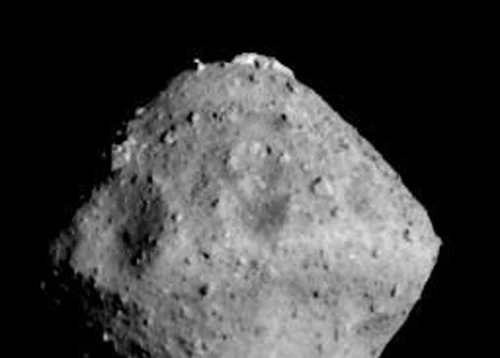Life on Earth is filled with mysteries, and one of the greatest enigmas lies beyond our planet’s atmosphere. Asteroids, those peculiar rocks that orbit the Sun, have captivated the curiosity of scientists and space enthusiasts for centuries. These celestial bodies, remnants of a distant past, offer a glimpse into the formation and evolution of our solar system. But what exactly are asteroids? Where do they come from? Are they remnants of a destroyed planet? Join us as we embark on a journey to unravel the secrets of asteroids and explore the fascinating world that lies between the planets of our solar system.
Contents
- What are Asteroids?
- The Birth of the Asteroid Belt
- Formation of Asteroids
- Composition of Asteroids
- Interesting Facts about Asteroids
- Asteroids: Remnants of a Destroyed Planet?
- Exploration and Study of Asteroids
- Potential Dangers of Asteroids
- The Future of Asteroid Research
- Conclusion
-
Frequently Asked Questions
- 1. What is the difference between asteroids and meteors?
- 2. Can asteroids collide with Earth?
- 3. Are all asteroids located in the asteroid belt?
- 4. Do asteroids have any moons?
- 5. Can we mine asteroids for resources?
- 6. Are all asteroids made of rock?
- 7. How are asteroids named?
- 8. Can asteroids have an impact on the climate?
- 9. Are there missions to study and explore asteroids?
- 10. Are there any plans to deflect or destroy potentially hazardous asteroids?
- References
-
Frequently Asked Questions
- What is the definition of an asteroid?
- How big are asteroids?
- Where can asteroids be found?
- What are the types of asteroids?
- How do asteroids form?
- Are asteroids dangerous to Earth?
- What is the hypothesis of asteroids being remnants of a destroyed planet?
- What evidence supports the theory of asteroids being remnants of a destroyed planet?
- What are impact craters and how do they provide clues about asteroids?
- What is the future of asteroid research?
- References
- Read More
What are Asteroids?
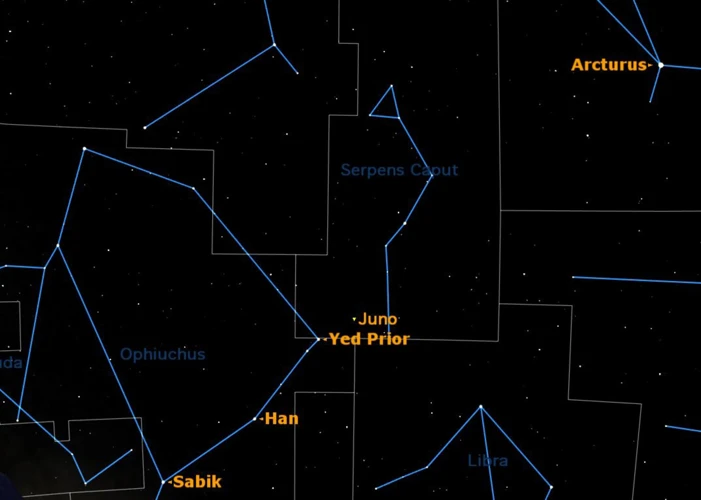
Asteroids are rocky objects that orbit the Sun and are remnants from the early days of our solar system. These celestial bodies, often referred to as minor planets, vary in size from small boulders to immense objects several hundred kilometers in diameter. They are primarily composed of rocky and metallic materials, with some containing traces of ice. Unlike planets, asteroids lack the gravitational force to maintain a spherical shape, resulting in irregular forms. They are categorized into three main groups based on their location: the innermost group that orbits between Mars and Jupiter known as the Main Belt, the Trojans that follow the path of Jupiter, and the Near-Earth Asteroids (NEAs) that come within close proximity to our planet. The Main Belt, where the majority of asteroids reside, stretches across a vast area and is home to millions of these celestial objects. Each asteroid is unique in its composition and characteristics, making them a subject of fascination for astronomers, planetary scientists, and space explorers.
The Birth of the Asteroid Belt
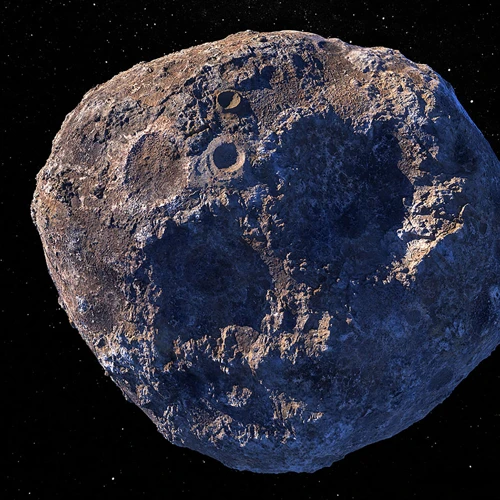
The birth of the asteroid belt is a fascinating event in the history of our solar system. It is believed that the asteroid belt originated from remnants of a primordial planet or protoplanet that failed to form due to the gravitational influence of Jupiter. According to the “Nice model” hypothesis, the formation of the asteroid belt can be attributed to the gravitational interactions between the giant planets, particularly Jupiter and Saturn. These interactions caused significant disturbances in the early solar system, resulting in the scattering of small rocky bodies. Rather than coming together to form a single planet, these rocky fragments were trapped in a region between Mars and Jupiter due to the gravitational forces of the surrounding planets. Over time, collisions and gravitational perturbations between the asteroids led to their current distribution within the asteroid belt. While the exact details of the asteroid belt’s formation are still being studied and debated, it is clear that its existence offers valuable insights into the dynamics of our evolving solar system.
Formation of Asteroids
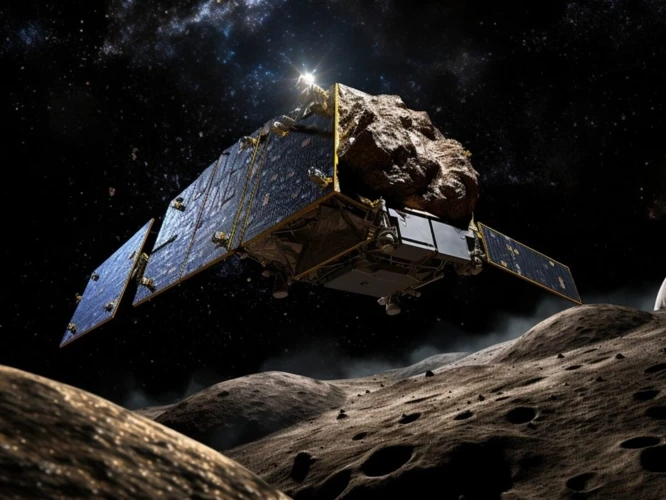
The formation of asteroids is closely tied to the early stages of our solar system. It is believed that these rocky bodies originated from the leftover material that didn’t form into planets during the process of planetary formation. The most widely accepted theory is the “Nice Model,” which suggests that the migration of giant planets such as Jupiter and Saturn disrupted the orderly arrangement of smaller planetesimals in the early solar system. As a result, these planetesimals collided and shattered, giving rise to a myriad of asteroids. Another possible formation mechanism is the “Grand Tack Model,” which proposes that Jupiter’s migration towards the Sun and subsequent retreat caused the scattering of smaller bodies, leading to the formation of asteroids. These models help explain the distribution and characteristics of different types of asteroids found in various regions of our solar system. While scientists have made significant progress in understanding the formation of asteroids, there is still much to learn about the intricacies of this process and the factors that influence their composition and distribution.
Composition of Asteroids
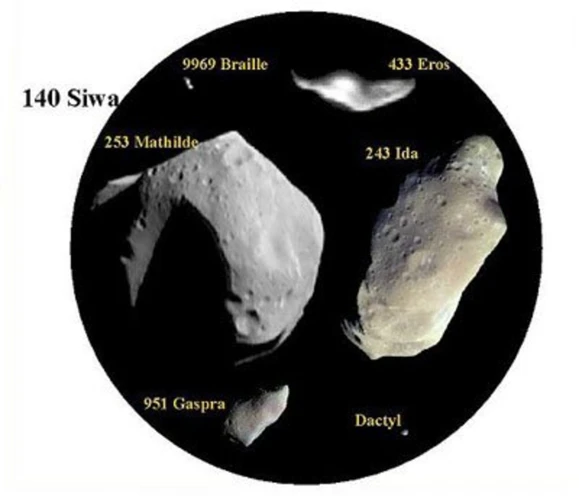
The composition of asteroids can vary depending on their location and origins. While they are predominantly composed of rock and metal, there are different types of asteroids with distinct compositions. Here are some key types:
1. C-type (Carbonaceous) Asteroids: These asteroids are rich in carbon and contain various other elements like water, organic compounds, and clay minerals. They are considered to be among the most primitive and have not undergone significant heating or melting.
2. S-type (Silicate) Asteroids: These asteroids are primarily composed of silicate minerals like olivine and pyroxene. They have a higher reflectance and are often found in the inner regions of the Main Belt. These asteroids are believed to be remnants from the inner part of the protoplanetary disk.
3. M-type (Metallic) Asteroids: These asteroids have a high metallic content, particularly iron and nickel. They are thought to be remnants of the cores of differentiated bodies that were disrupted during collisions. These asteroids often have a higher density compared to other types.
4. P-type (Primitive) Asteroids: This category encompasses a diverse range of asteroids that do not fit into the previous classifications. They may have mixed compositions or unique characteristics not found in other types.
In addition to these primary types, there are also hybrid and specialized asteroid groups. For example, the Vesta family of asteroids is known for their basaltic surface compositions, similar to the composition of Earth’s oceanic crust. Scientists have also discovered rare metallic asteroids that are almost entirely composed of iron and nickel.
Studying the composition of asteroids provides valuable insights into the early history of the solar system and the processes that shaped it. By analyzing the composition of these celestial bodies, scientists can gain a better understanding of the materials present during their formation and the potential resources they may hold for future space exploration and colonization endeavors.
Interesting Facts about Asteroids

– Asteroids come in a wide range of sizes, from small rocky fragments to massive objects larger than some moons in our solar system.
– The largest asteroid known, Ceres, is found in the Main Belt and is approximately 590 miles (940 kilometers) in diameter. It is so massive that it accounts for around one-third of the total mass of the entire asteroid belt.
– Some asteroids have moons of their own. These moons, known as asteroid moons or companions, orbit around the larger asteroid while it travels through space.
– The first asteroid ever discovered is named Ceres, which was found by Italian astronomer Giuseppe Piazzi on January 1, 1801.
– NASA’s spacecraft Dawn embarked on a mission to study Ceres in 2007 and became the first spacecraft to orbit and closely examine a dwarf planet.
– Asteroids often contain valuable resources such as metals, water, and other minerals. In the future, mining asteroids could become a potential source for these resources in space exploration and colonization.
– Some asteroids have unique shapes and features. For example, asteroid Itokawa, visited by the Japan Aerospace Exploration Agency’s Hayabusa spacecraft, has a peanut-like shape.
– Asteroids can sometimes be visible from Earth, and occasionally, they pass relatively close to our planet. These near-Earth asteroids pose certain risks, but scientists closely monitor them to ensure the safety and security of our planet from potential impacts.
– Studying asteroids provides invaluable insight into the early formation and evolution of the solar system, helping scientists better understand the origins of celestial bodies and the conditions that led to the emergence of life on Earth.
These fascinating facts about asteroids showcase the diversity and significance of these celestial objects in our solar system. Their unique characteristics and potential resources make them a subject of both scientific exploration and future endeavors in space travel and colonization.
1. Asteroid Belt Size and Location
The asteroid belt, located between the orbits of Mars and Jupiter, is an expansive region filled with countless asteroids. Its size and location make it a captivating feature of our solar system. Spanning approximately 329 to 478 million kilometers, the asteroid belt covers a vast distance. Despite its name, the belt is not uniformly dense but rather consists of numerous individual asteroids orbiting the Sun. These asteroids follow elliptical paths, and their orbits can vary in inclination and eccentricity. The distribution of asteroids within the belt is not evenly spread out, but instead, they tend to congregate in specific regions known as asteroid families or clans. These families are believed to have formed from larger asteroids that were disrupted by collisions or gravitational interactions. The vastness of the asteroid belt provides ample opportunities for study and exploration, allowing scientists to deepen their understanding of the origins and dynamics of these intriguing celestial objects.
2. Types of Asteroids
There are several different types of asteroids, each with its own unique characteristics and composition. The most common types include:
1. C-type asteroids: These are carbonaceous asteroids, which are the most common type found in the Main Belt. They are dark in color and rich in carbon-based compounds, such as organic compounds and water. C-type asteroids are thought to be remnants of the early solar system and may contain valuable resources for future space exploration.
2. S-type asteroids: These are silicate asteroids that are composed mainly of silicate minerals, such as pyroxene and olivine. They are bright in color and make up a significant portion of the asteroids in the inner region of the Main Belt. S-type asteroids are believed to have originated from the core region of a larger protoplanet that was disrupted during the early formation of the solar system.
3. M-type asteroids: These are metallic asteroids that are composed primarily of nickel and iron. They have a high reflectivity and are often found in the outer region of the Main Belt. M-type asteroids are thought to be fragments from the metallic core of a former larger body that experienced collisions and disruption.
4. X-type asteroids: These are a rare type of asteroid that have characteristics of both C-type and S-type asteroids. They have a diverse composition and can exhibit a wide range of colors.
Each type of asteroid provides valuable insights into the early history of our solar system and the processes that occurred during its formation. The study of these diverse celestial objects is crucial in understanding the dynamics of our cosmic neighborhood and exploring potential resources for future space exploration endeavors.
3. Asteroids vs. Comets
When comparing asteroids to comets, these two celestial bodies exhibit distinct characteristics. While asteroids are composed primarily of rocky and metallic materials, comets are made up of a combination of ice, rock, and dust. This composition difference is due to their different formation locations within the solar system. Asteroids are found primarily in the Main Belt or other defined regions, whereas comets originate from the outer reaches of the solar system in regions such as the Oort Cloud and Kuiper Belt. Another notable distinction is the appearance and behavior when they approach the Sun. When comets approach the Sun, the heat causes the icy nucleus to vaporize, forming a glowing coma or a fuzzy envelope around it. This phenomenon creates a distinct tail that can be observed from Earth. On the other hand, asteroids do not have this tail formation as they lack the significant amounts of ice that comets possess. Understanding these differences between asteroids and comets is essential in studying the origins and evolution of our solar system and the various objects it comprises.
Asteroids: Remnants of a Destroyed Planet?
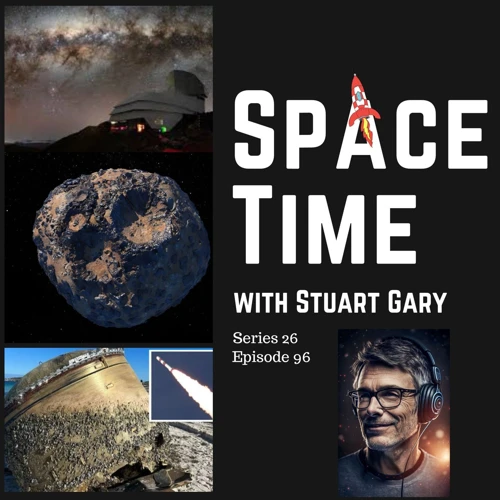
The idea that asteroids are remnants of a destroyed planet is a fascinating hypothesis that has sparked both intrigue and debate among scientists. According to this theory, billions of years ago, a large planet-like object, often referred to as “Planet V” or “Planet Phaeton,” once existed in our early solar system. However, through a cosmic collision or gravitational interactions, this hypothetical planet was shattered into countless fragments, which we now know as asteroids. While the notion of a former planet may seem speculative, there is evidence to support this intriguing idea. Ancient meteorites found on Earth share similarities with asteroids, providing clues to their shared origins. Additionally, the presence of impact craters on various celestial bodies further bolsters the hypothesis, suggesting past cosmic collisions and the resulting debris. Although the concept of asteroids as remnants of a destroyed planet is not yet conclusive, continued research and exploration hold the potential to unveil more secrets about the mysterious origins of these celestial objects.
1. The Hypothesis of a Former Planet
The Hypothesis of a Former Planet suggests that asteroids may be remnants of a destroyed planet. According to this theory, billions of years ago, a large planet-sized body existed in the early solar system. However, due to gravitational disturbances or collisions with other celestial objects, this planet was shattered into numerous fragments, giving rise to the asteroid belt we observe today. These fragments, which vary in size, composition, and orbital characteristics, continue to orbit the Sun. While there isn’t concrete evidence to confirm the existence of this former planet, scientists have proposed this hypothesis as an explanation for the abundance of asteroids in the solar system. The idea of a lost planet captures the imagination, fueling speculations about its nature and the potential secrets it may hold. Studying asteroids provides valuable insights into the formation and evolution of our solar system, contributing to our understanding of the celestial tapestry that surrounds us. However, further research and exploration are needed to uncover the truth behind this captivating theory.
2. Evidence Supporting the Theory
Evidence supporting the theory that asteroids are remnants of a destroyed planet is compelling and based on several key observations. Firstly, the composition of some asteroids is consistent with the materials found on terrestrial planets like Earth. By analyzing the spectral signatures of certain asteroids, scientists have identified similarities in mineral compositions, such as iron, nickel, and silicate minerals. This suggests that asteroids could have originated from a parent body that underwent processes similar to planet formation.
Secondly, the presence of differentiated asteroids provides further evidence. Differentiation refers to the separation of a body into distinct layers based on density. Some asteroids exhibit signs of differentiation, with layers of different materials, such as a metallic core surrounded by a rocky mantle. This is reminiscent of the layering seen in terrestrial planets, indicating that the parent body of these asteroids may have experienced a similar process.
The discovery of meteorites on Earth that originated from asteroids lends support to the theory. These meteorites, known as achondrites, have compositions that match certain asteroid types. Studying these meteorites provides valuable insights into the composition and processes that occurred in the early solar system.
Additionally, the orbits of asteroids in the asteroid belt provide clues to their origin. The distribution and characteristics of asteroids suggest that they were formed closer to the Sun but were scattered by gravitational interactions with larger planets, particularly Jupiter. Computer simulations of the early solar system support this idea, showing how the gravitational influence of planets could have disrupted the formation of a planet between Mars and Jupiter, leading to the creation of the asteroid belt.
While these pieces of evidence do not provide conclusive proof, they strongly support the hypothesis that asteroids are remnants of a destroyed planet. Further studies, including missions to explore and collect samples from asteroids, are essential for a deeper understanding of their origin and the formation of our solar system.
3. Impact Craters as Clues
Impact craters on celestial bodies play a crucial role in understanding the history and composition of asteroids. These craters provide valuable clues about the violent collisions that have occurred in our solar system’s past. When an asteroid crashes into a planet or moon, it releases an incredible amount of energy, causing a massive explosion upon impact. The force of the impact creates a crater, leaving behind a distinct geological feature. By studying impact craters, scientists can estimate the size, velocity, and angle of the impacting asteroids. They can also analyze the resulting debris and examine the geological layers exposed by the collision. The presence and distribution of impact craters on asteroids, such as the famous Barringer Crater on Earth or the numerous craters found on the Moon’s surface, help scientists piece together the history and processes that have shaped these rocky objects. These valuable clues shed light on the violent past of our solar system and provide insights into the formation and evolution of asteroids.
Exploration and Study of Asteroids
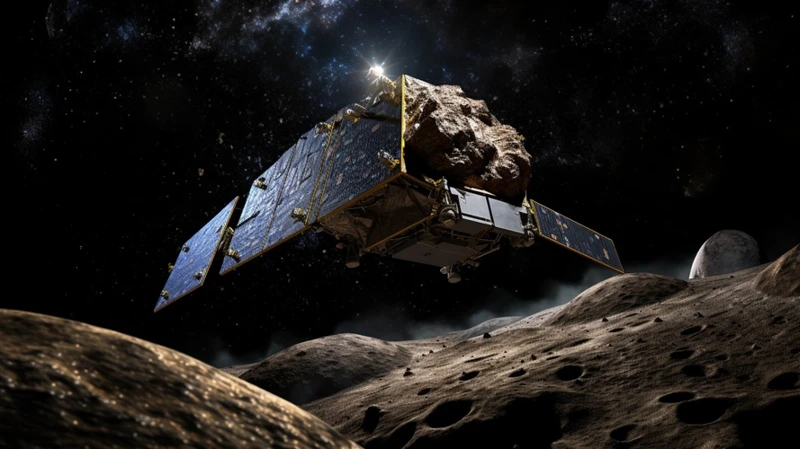
Exploration and study of asteroids have been a key focus for scientists and space agencies around the world. These celestial objects provide valuable insights into the history and composition of our solar system. To better understand asteroids, various missions have been undertaken to study these intriguing rocks up close. One notable mission is NASA’s Dawn spacecraft, which explored two large asteroids located in the Main Belt: Vesta and Ceres. Dawn’s observations have revealed valuable information about the geology, composition, and internal structure of these asteroids, shedding light on their formation and evolution. Another significant mission is the Japanese Aerospace Exploration Agency’s (JAXA) Hayabusa2 spacecraft. It successfully landed on the asteroid Ryugu, collected samples, and returned them to Earth for detailed analysis. This unprecedented mission provided scientists with direct access to material from an asteroid, allowing them to study its composition and gain insights into the early solar system. Additionally, ground-based telescopes play a crucial role in the study of asteroids, providing observations and data that complement spacecraft missions. Ongoing and future missions, such as NASA’s Lucy mission and the European Space Agency’s (ESA) Hera mission, aim to further our understanding of asteroids and unlock their secrets. With advanced technologies and continuous exploration efforts, we are poised to uncover more about these ancient remnants and their role in the cosmic tapestry.
Potential Dangers of Asteroids
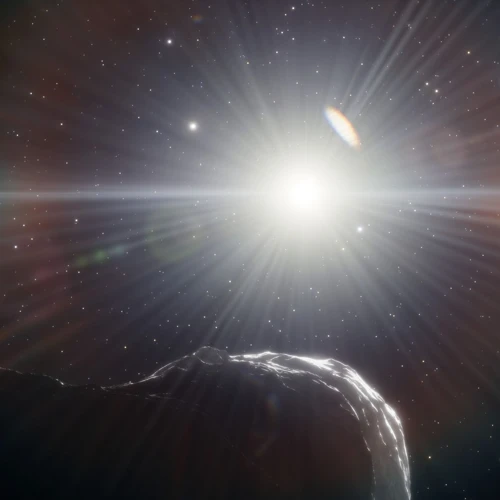
The potential dangers of asteroids pose a significant concern for our planet. While the chance of a catastrophic impact is relatively rare, it is crucial to understand and prepare for such events. Here are some key points regarding the potential dangers of asteroids:
1. Asteroid Collisions: Asteroids on a collision course with Earth can cause devastating consequences, depending on their size, speed, and composition. While smaller asteroids typically burn up in the atmosphere and pose minimal risk, larger ones can survive the journey and impact the surface with tremendous force. The damage caused by a significant asteroid impact can range from regional destruction to global catastrophic effects.
2. Near-Earth Objects (NEOs): NEOs refer to asteroids and other celestial objects that come within 1.3 astronomical units (AU) of Earth’s orbit. These objects are particularly worrisome due to their proximity to our planet. Scientists and space agencies closely monitor NEOs to assess any potential threats they may pose in the future. The detection and tracking of these objects allow us to calculate their trajectories and evaluate the likelihood of an impact.
3. Planetary Defense: Developing strategies to mitigate the potential dangers of asteroids is crucial for safeguarding humanity. Efforts are focused on two main approaches: deflection and disruption. Deflection involves altering the path of an asteroid to divert it away from Earth, while disruption aims to break up larger objects into smaller, less hazardous fragments. Various methods, such as gravitational tractors, kinetic impactors, and nuclear deflection, are being explored to achieve these goals.
4. Historical Impacts: Our planet’s history bears evidence of past asteroid impacts, such as the famous Chicxulub impact that is believed to have caused the extinction of dinosaurs. Studying these historical impacts provides valuable insights into the potential consequences of future asteroid collisions. By understanding the frequency, size, and effects of past impacts, scientists can better assess the risks and implement appropriate strategies to mitigate danger.
5. Public Awareness and Preparedness: Raising public awareness about the potential dangers of asteroids is crucial. Governments, organizations, and space agencies actively promote education and outreach programs to inform the public about asteroid impacts and the steps taken to prevent them. Emergency response plans and evacuation strategies are also developed to ensure preparedness in the event of an imminent or potential asteroid impact.
While there is no immediate impending threat, the potential dangers of asteroids cannot be ignored. By continuously monitoring and researching these celestial objects, we can enhance our understanding and preparedness to safeguard our planet and mitigate potential catastrophic events. Remember, knowledge and proactive measures are key to minimizing the risks associated with asteroids and ensuring the safety and well-being of our world.
The Future of Asteroid Research
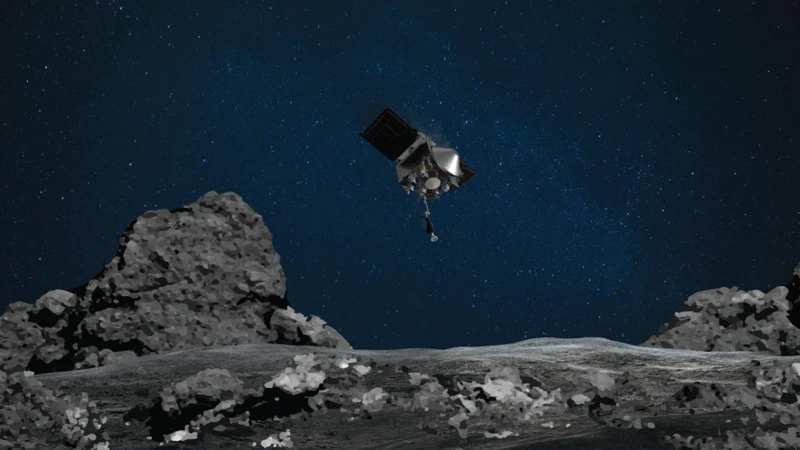
The future of asteroid research holds immense possibilities and potential for new discoveries. Scientists, astronomers, and space agencies around the world are actively engaged in studying asteroids to gain a deeper understanding of our solar system’s formation and the potential impact of these celestial objects on Earth. One area of focus in asteroid research is the identification and tracking of Near-Earth Asteroids (NEAs) that pose a potential threat of collision with our planet. Understanding their trajectories and composition is crucial for developing strategies to mitigate the risks associated with such encounters. Additionally, advancements in technology are opening up opportunities for asteroid mining, where valuable resources can be extracted from these rocky bodies for future space exploration and utilization. The study of asteroids also provides valuable insights into the origin of water on Earth and the potential for extraterrestrial life. Robotic missions, such as NASA’s OSIRIS-REx and JAXA’s Hayabusa2, have already embarked on sample return missions from near-Earth asteroids to further our understanding of these fascinating objects. As technology continues to advance, we can expect more sophisticated missions and space telescopes to be developed, enabling us to explore and study asteroids in greater detail. The future of asteroid research is filled with excitement, surprises, and the potential for groundbreaking discoveries that will further unravel the mysteries of our universe and our existence within it.
Conclusion
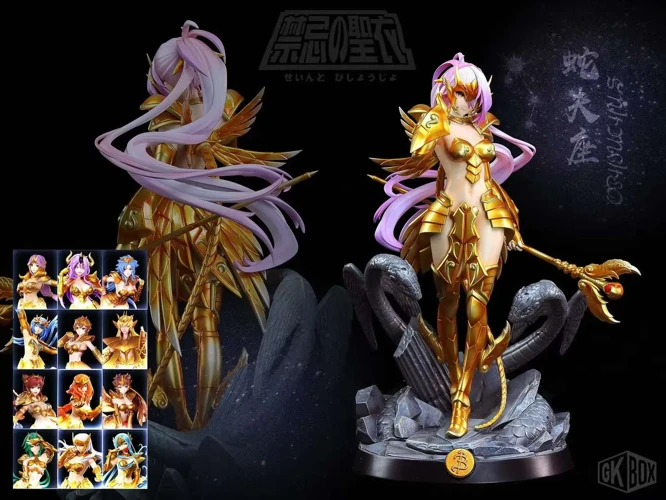
In conclusion, the study of asteroids has provided invaluable insights into the history and formation of our solar system. These celestial bodies, remnants of a bygone era, have captivated scientists and space enthusiasts alike with their diverse compositions and intriguing origins. While the hypothesis of asteroids being remnants of a destroyed planet remains speculative, the evidence supporting this theory is compelling. Impact craters serve as clues, revealing the destructive forces that shaped our solar system’s history. The exploration and study of asteroids continue to expand our understanding of the universe and the potential dangers they may pose to our planet. As technology advances, future research endeavors aim to unlock even more secrets and perhaps provide answers to the remaining questions about these enigmatic objects. Whether they hold the key to understanding celestial events, like future-predicting events planetary alignments, creatures of Celtic myth, or simply stand as remnants of a planetary tragedy, asteroids will undoubtedly continue to spark our curiosity and drive further exploration into the depths of space.
Frequently Asked Questions

1. What is the difference between asteroids and meteors?
Asteroids are rocky objects that orbit the Sun, while meteors are asteroids or other objects that enter the Earth’s atmosphere. Once a meteoroid enters the Earth’s atmosphere and burns up, it is called a meteor. If a meteor survives the journey through the atmosphere and lands on the Earth’s surface, it is known as a meteorite.
2. Can asteroids collide with Earth?
Yes, asteroids can collide with Earth. While the chances of a significant impact are relatively rare, these events have occurred throughout the Earth’s history. Thankfully, NASA and other space agencies actively monitor and track potentially hazardous asteroids, improving our ability to predict and mitigate potential threats.
3. Are all asteroids located in the asteroid belt?
No, not all asteroids are located in the asteroid belt. While the asteroid belt between Mars and Jupiter is the largest concentration of asteroids, there are also asteroids found in other areas of the solar system. Near-Earth Asteroids (NEAs) are a group of asteroids that come within close proximity to our planet, and Trojans are asteroids that share the same orbital path as Jupiter.
4. Do asteroids have any moons?
Yes, some asteroids have moons. These moons, also known as asteroid satellites, orbit around their larger asteroid counterparts. Examples include the asteroid Ida, which has a moon called Dactyl, and the asteroid Itokawa, which was visited by the Japanese Hayabusa mission and found to have a small moonlet.
5. Can we mine asteroids for resources?
There is significant interest in asteroid mining for valuable resources such as metals, water, and other volatile compounds. The idea is to utilize these resources in space exploration and potentially support future human missions. However, the technical and economic feasibility of asteroid mining is still being explored.
6. Are all asteroids made of rock?
No, not all asteroids are made solely of rock. Asteroids can have varying compositions, including rocky and metallic materials. Some asteroids, known as carbonaceous asteroids, contain high amounts of carbon-rich compounds and may also contain traces of water ice.
7. How are asteroids named?
Asteroids are typically named after people, places, or objects of historical, cultural, or scientific significance. The discovery of an asteroid is usually credited to the astronomer who first observes it, and they have the right to propose a name for the asteroid, which is then approved by the International Astronomical Union.
8. Can asteroids have an impact on the climate?
While individual asteroid impacts are unlikely to have a significant impact on Earth’s climate, large-scale or repeated impacts could potentially affect the global climate. Some scientists believe that the impact of a large asteroid or comet could have played a role in past mass extinction events.
9. Are there missions to study and explore asteroids?
Yes, there have been several missions to study and explore asteroids. Examples include NASA’s NEAR Shoemaker mission, which successfully orbited and landed on the asteroid Eros, and the Japanese Hayabusa mission, which collected samples from the asteroid Itokawa and returned them to Earth.
10. Are there any plans to deflect or destroy potentially hazardous asteroids?
Yes, space agencies and researchers are actively studying methods to deflect or mitigate potential asteroid impacts. This includes concepts such as asteroid deflection missions, where spacecraft would alter the asteroid’s trajectory, and asteroid fragmentation, where the goal is to break up an incoming asteroid to reduce its harmful effects.
References
Frequently Asked Questions

What is the definition of an asteroid?
An asteroid is a small body that orbits the Sun and is made up of rock and metal. They are remnants from the early solar system.
How big are asteroids?
Asteroids can vary in size from just a few meters to hundreds of kilometers in diameter. The largest known asteroid is Ceres, which has a diameter of about 940 kilometers.
Where can asteroids be found?
Most asteroids in our solar system are found in the asteroid belt, which lies between the orbits of Mars and Jupiter. However, asteroids can also exist in other regions, such as near-Earth orbit or even beyond our solar system.
What are the types of asteroids?
There are three main types of asteroids based on their composition: C-type (carbonaceous), S-type (silicate), and M-type (metallic). Each type has different characteristics and chemical compositions.
How do asteroids form?
Asteroids are formed through a process called accretion, where dust and gas in the early solar system come together to form larger bodies. These bodies can eventually collide and break apart, creating asteroids.
Are asteroids dangerous to Earth?
While most asteroids pose no threat to Earth, some larger asteroids have the potential to cause significant damage if they were to collide with our planet. However, scientists are actively studying and monitoring asteroids to better understand their trajectories and potential risks.
What is the hypothesis of asteroids being remnants of a destroyed planet?
The hypothesis suggests that the asteroids in the asteroid belt could be remnants of a planet that was destroyed during the early formation of the solar system.
What evidence supports the theory of asteroids being remnants of a destroyed planet?
There are several lines of evidence that support this theory, including the similarities in composition between asteroids and planets, the presence of differentiated asteroids, and the discovery of rare meteorites that are thought to originate from the planet that was destroyed.
What are impact craters and how do they provide clues about asteroids?
Impact craters are the result of asteroids or other celestial bodies colliding with a planet or moon. The study of impact craters can provide valuable information about the size, composition, and frequency of asteroid impacts, which helps in understanding the history and nature of asteroids.
What is the future of asteroid research?
The future of asteroid research looks promising. Scientists are planning to send spacecraft to conduct detailed surveys of asteroids, collect samples, and even explore the possibility of asteroid mining for valuable resources. This research will enhance our understanding of asteroids and help us develop strategies to mitigate potential asteroid threats in the future.
References
- Remnants of a destroyed planet may lurk near Earth’s core
- Is it possible that the asteroid belt is the remnants …
- Many asteroids might be remnants of five destroyed worlds …

